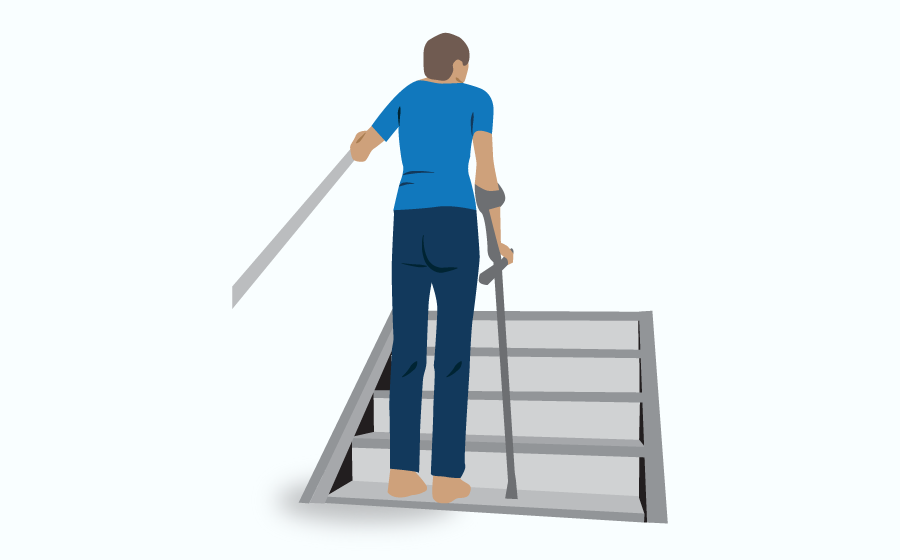Going up and down the stairs

Going up
1.
Stand with your crutches or sticks close to the stairs.
2.
Take a step up with your non-operated leg.
3.
Take a step up with your operated leg to the same step.
4.
Bring your crutches or sticks to join you.

Going down
1.
Place your crutches or sticks one step down.
2.
Take a step down with your operated leg.
3.
Step down with your non-operated leg on to the same step.
Getting into the car

1.
Position yourself sideways to the car, with the backs of your legs against the seat.
2.
Reach for the back of the seat base.
3.
Put your operated leg out in front of you, with the knee straight, and lower yourself onto the edge of the seat. It may help if you lean back slightly.

4.
Use your non-operated leg and your hands to push yourself backwards onto the seat, keeping your operated leg straight in front of you.
5.
Leaning backwards, turn on your buttocks and slide your legs into the car.
6.
Adjust yourself into a comfortable position.
Risk of deep vein thrombosis (DVT)
The risk of developing blood clots can continue for up to 12 weeks after you have gone home.
- Remember to walk around as much as you can
- Drink plenty of water
- Always try to raise your leg when you are resting, if you can
- This reduces the pressure in the calf veins, and helps to prevent blood and fluid from "pooling" in the calves
- You should aim to raise your foot higher than your hip so gravity helps with blood flow returning from the calf
- The easiest way to raise your leg is to recline on a sofa with your leg up on a cushion
- If you have been asked to wear support stockings at home, please wear them for the recommended time (usually 6 weeks after your operation)
Enoxaprin
You will require enoxaparin (a blood thinner) for a period of 28 days after your operation.
If you are discharged earlier than this, the ward nurse will teach you or a family member to self-inject. If this is not possible, a district nurse will be arranged to administer the daily doses.
Pain control at home
It's important to get to know your pain medicines and when to take them. If it is painful to move around, take pain medication regularly, and 30 minutes before doing any exercise.
Osteoporosis
As you get older, your bones will become weaker and are more likely to break. All patients will be considered for bone strengthening treatment. You might need a bone density scan to help decide what treatment you need. Treatments can take the form of tablets, drips or injections. These need to be continued over a number of years to protect against future fractures.
Occupational therapy assessment
The occupational therapist will assess whether you will require any equipment when you are discharged.
Future fall prevention
A broken hip is usually the result of a fall. Preventing further falls will be considered when planning rehabilitation, future mobility and long- term independence.
Keep your walking equipment within reach and ensure you have a means of communication to hand at all times, e.g. mobile phone or pendant alarm. If you have hearing aids and glasses, ensure you wear these, and you should wear sturdy footwear.
How can you help?
- Take care when standing or getting up out of bed bed or from a chair
- Use your walking aids (if recommended) when moving around
- Wear your glasses or hearing aids (where appropriate)
- Wear appropriate, well-fitted shoes
- Clear floor space, and remove clutter and any trip hazards
- Ensure your room is brightly lit so you can see where you're going
Last reviewed: 02 March 2023